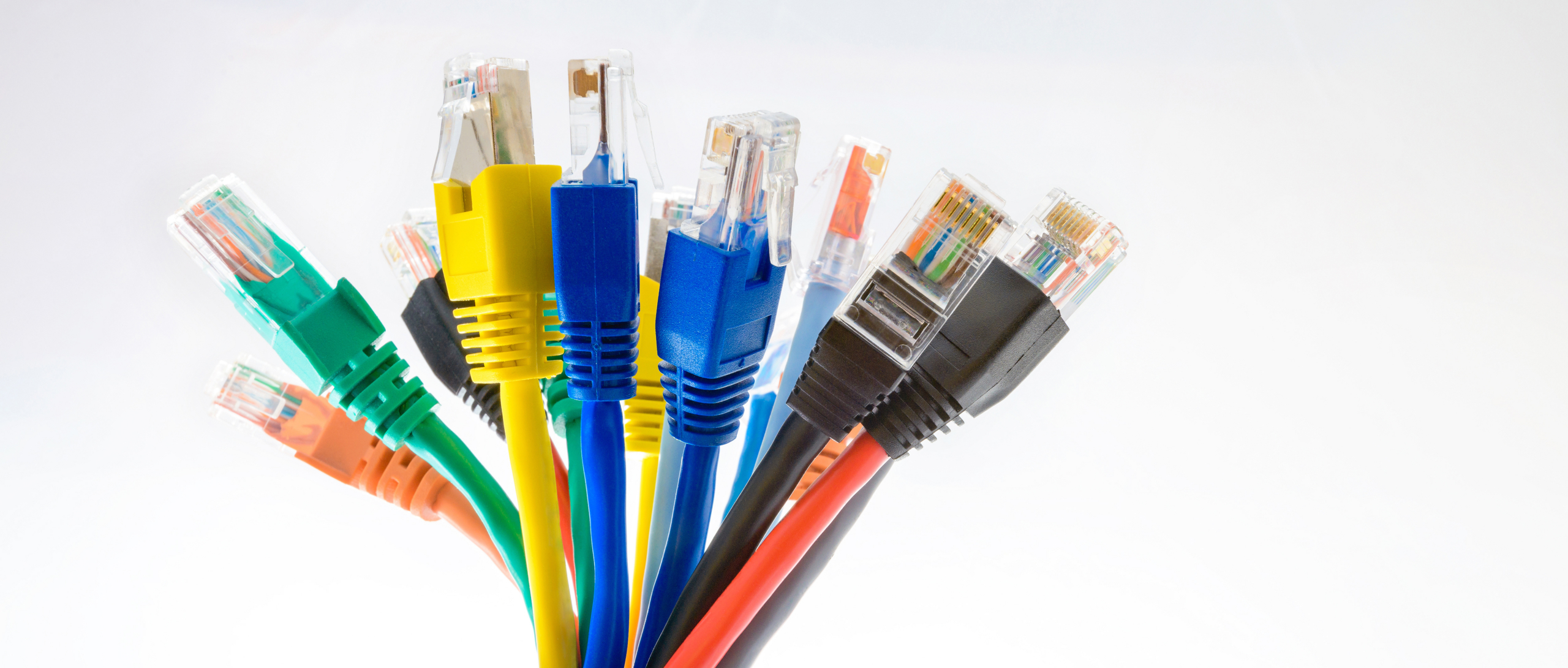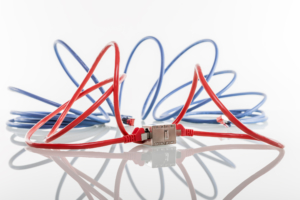Can Cat6 cables work with Cat5?
When customers upgrade their technology and thus their network infrastructure, we always asked if Cat6 and Cat5 cables can work together? This is usually because they are upgrading part of their building that already has Cat5e cabling and they want to know whether to upgrade partially or whole to Cat6 cabling. Therefore, can cat6 cables work with cat5?
This depends on whether the questions are physical or technical.
Each cable category will physically fir one another for all different levels of performance. Thus, for all Cat5, Cat6 and Cat6a elements. However, the performance of the overall link when connecting different categories is compromised
The Phsical Llements of a Structured Cabling Link
The complete connection of a structured cable link is given below
- A patch panel within a data cabinet whether it be a comms room and a satelittle cabinet area
- The structured cabling from the patch panel to the various hardware and equipment
- VoIP and Telephones
- Computers
- Televisions, Screens, Projectors, and other Audio Visual
- Scanners and Printers
- Access points for Wi-Fi
3. The termination modules where the cabling ends
4. Patch leads to connect the patch panels to switches and user modules to hardware
Whether in Cat5, Cat6 or Cat6a, all of these elements will thus have the same termination and similar connection outlets. This is irrespective of Category.
The standard termination is referred to as a RJ45 connection
In addition, Cat7 and Cat8 wiring components may operate in the lower categories, but they have other connectors that do not fit the overall solution with the Cat5e, Cat6 and Cat6a devices. They at times have a RJ45 compatible termination, but they have additional connections that aren’t seen in Cat5e through Cat6a.
Data Cabling and its lowest ranking
The problem is that the overall performance of the data cabling system is only as good as the weakest component of any device cabling link. Thus, if a Cat6 infrastructure contains a Cat5e component, the total system is rated at a maximum Cat5e performance .
Therefore, in this example, you end up with the following components in the overall structured cabling link
- Category 6 Patch Panels
- Cat6 Cable
- Cat6 Termination jacks or modules
- Cat5e Patch Leads
The overall connection will work fine with this combination of components. The problem is that the overall link performance will be limited to Cat5e cabling capabilities.
The overall cabling link is only as good as a Cat5e cabling link, even though cat6 elements make up 75% of the overall cabling components
The same will also be true for any mixture between Cat5e and Cat6 of these components. It is still classified in the lowest category. In addition, if Cat5e, Cat6, Cat6a, Cat7, and Cat8 are mixed in the same way, the lowest category component becomes the overall maximum capability
What is the situation we usually see?
It is exactly the same as in the illustration above where the most common obersvances are found.
For example ,an overall cabling system (i.e., Cat6a) is installed by a installer / contractor. The end client then either buys an lower grade patch lead due to lack of knowledge (i.e. Cat6) or purchases a lower grade patch lead to save money.
The result is the more expensive Cat6a system they have had installed dis now only as good as a lesser grade system. The major problem in this scenario would be the loss of 10 gigabit transmission just because of the incorrect patch leads
Another example is when customers buy Cat6 leads, and they only have a Cat5e cabling infrastructure. The Cat6 leads cost more but don’t enhance their performance.
Comparison of the Different Structured Cabling Systems
Your choice for the structured cabling system you require will ultimately depend on the following
- The available budget
- Any existing cabling systems you have in place
- Your connection performance requirements. Do you require Gigabit or 10 Gigabit for example
- The construction of your building. What space do you have for the different cabling types?
The connection and performance requirements should always be your first point of consideration. If you have specific systems that need certain connection capabilities, then you may have a minimum system you require for your data cabling.
For example, you have 10 Gigabit systems and computers. Therefore, if you instal, a Cat5e structured cabling infrastructure you will never achieve that speed. Regardless of cost savings you now have a system that doesn’t work
Below are the different capabilities of the different structured cabling categories

For all new installation, we recommend a minimum of cat6 cabling installation. In the majority of cases, if budget allows a Cat6a system, is the best future proofing choice
Our project team is happy to discuss different options and provide several pricing points for your to consider
Call today for advice and to arrange a free survey
For further articles, please visit our Blog Here





